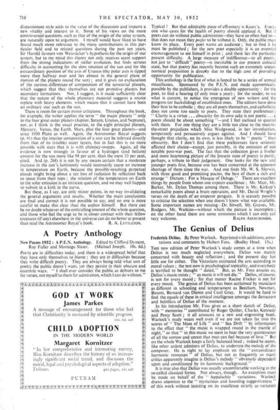The Mysterious Universe
DOES life exist anywhere else in the universe than on earth ? That is one of those questions that man must always have asked himself. The question arises more insistently and perhaps less speculatively nowadays as we stand almost permanently aghast at the enormous scale and prodigality of this mysterious universe. Can it be that life and the universe have both existed together for ever ? One of the first things we need to know is whether planetary systems like our own, containing an occasional planet like the earth suitable as an abode of life, occur frequently in the cosmos, or whether our insignificant home in space is unique among astronomical objects. And who better to inform us on such matters than the Astronomer Royal ? The present volume first appeared in 1940 and is now brought out in substantially revised form.
Since some uncertainty attaches to what actually constitutes life and how it ma-y have originated, the biological aspect is dealt with, and the problem reduced to one of astronomical physics, by assuming that, if conditions exist anywhere suited to life as we know it, then life of that kind will somehow inevitably make its appearance. In view of this crucial assumption, it may be asked whether a study of the question can ever rise' above merely superficial speculation. However that may be, such discussions undoubtedly provide a valuable opportunity for comparing widely diverse lines of evidence, and seeing whether they reinforce or contradict each other, evert though in the end we do not get a decisive answer to the original question. Yet another value of such essays is to make something of the achievements of astronomy intelligible to the so-called ordinary man (that is, in this case, any person not expert in astronomy), who after all has a right to be-kept informed as to progress in science.
The aim of the Astronomer Royal's book is to review the position to date in a form as non-technical as the material permits. His dispassionate style adds to the value of the discussion and imparts a new vitality and interest to it. Some of his views on the more controversial questions, such as that of the origin of the solar system, are naturally open to argument. I myself would have liked to have found much more reference to the many contributions in this par- ticular field and to related questions during the past ten years. Sir Harold favours von Weizshcker's hypothesis for the origin of our system, but to my mind this theciry not only receives scant support from the strong indications of stellar evolution, but finds serious difficulty in accounting for the slow rotation of the sun and for the extraordinary position of the axis of Uranus (the polar axis is tipped more than halfway over and lies almost in the general plane of motion of the planets round the sun) ; and it gives no explanation of the curious differences of composition of the terrestrial planets, which suggest that they themselves are not primitive planets but secondary formations. Nor, I suggest, is it made sufficiently clear that the nature of the whole planetary material suggests a source replete with heavy elements, which means that it cannot have been an ordinary star such as the sun.
There is room for certain minor criticisms. Throughout the book, for example, the writer applies the term " the major planets " only to the four great outer planets (Jupiter, Saturn, Uranus, and Neptune), not, as I think is the usual practice, to the eight principal planets, Mercury, Venus, the Earth, Mars, plus the four great planets—and since 1930 Pluto as well. Again, the Astronomer Royal suggests (p. 91) that the interior composition of a star can be inferred directly from that of its (visible) outer layers, but in fact this is no more possible with stars that it is with chimney-sweeps. Again, all the evidence is now strongly in favour of a hydrogen (and helium) content for the sun more like 98 per cent. than the mere 33 per cent. cited. And (p. 268) it is not by any means certain that a moderate increase in the sun's luminosity would necessarily cause an increase in temperature on Earth, because the possibly-resulting perpetual clouds might bring about a net loss of radiation by reflection back to space from their tops ; the relation of the temperature on Earth to the solar emission is an intricate question, and we may well happen to subsist in a kink in the curve.
But these, as I say, are only minor points, in no way invalidating the general arguments and results. Whether the main conclusions are final and correct it is not possible to say, and no one is more careful to make this clear than the author himself. But there can be no doubt whatever of the enthralling interest of the whole question, and those who feel the urge to be in closer contact with their fellow creatures (if any) elsewhere in the universe can do no better at present than read the Astronomer Royal's book. R. A. LYTTLETON.











































 Previous page
Previous page